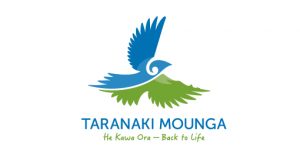Taranaki Mounga has been named a Flagship Site by the Biological Heritage National Science Challenge.
New Zealand’s Biological Heritage National Science Challenge’s job is to bring together and focus research on ways to deliver its objectives of protecting and managing native biodiversity, improving biosecurity, and enhancing resilience to global threats and pressures.
Its’ mission is to; Reverse the decline of New Zealand’s biological heritage, through a national partnership to deliver a step change in research innovation, globally leading technologies and community and sector action.
The Challenge, established in 2014, has 17 parties, who are already doing a huge amount of research towards the Challenge goals.
- Protect and restore: secure threatened species and resilient ecosystems
- Eliminate threats: weeds, pests, mammal predators, and pathogens
- Detect and eradicate: zero impacts from biosecurity incursions
- Restore healthy freshwater: wai taonga and mahinga kai
- Track our progress: a bioheritage scorecard for Aotearoa

Biological Heritage Challenge Director Dr Andrea Byrom says partnering with Flagship sites like Taranaki Mounga will help New Zealand achieve transformational environmental change and assist the Challenge.
“Taranaki Mounga exemplifies our shared values and vision: striving to build resilience in threatened species and ecosystems, strong community engagement, and partnership with iwi. Working in parthership to achieve shared goals and outcomes will transform New Zealand’s environments and make us a leader on the world stage”.
― Director Dr Andrea Byrom
One area of research the New Zealand’s Biological Heritage National Science Challenge team is working on is biosecurity and in particular myrtle rust which is of concern in the Taranaki region.
In response to the myrtle rust incursion the team have developed an app for observing common host plants that may be susceptible to myrtle rust and getting assistance from others to confirm the identification. The app can then be used for reporting potential infestations of myrtle rust to the Ministry for Primary Industries. Learn more here.
Cape to City
Cape to City, a 26,000 hectare collaborative ecological restoration project in Te Matau a Māui/Hawke’s Bay is also a Flagship Site. The project is on a mission to transform pest management in Hawke’s Bay so that native species can be reintroduced into the region. The work is driven by scientific research achieved through their partnerships with Manaaki Whenua – Landcare Research and the Biological Heritage Science Challenge.

